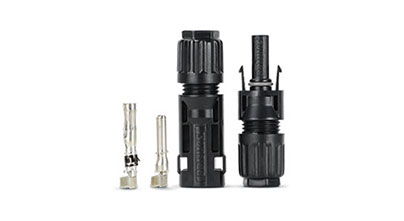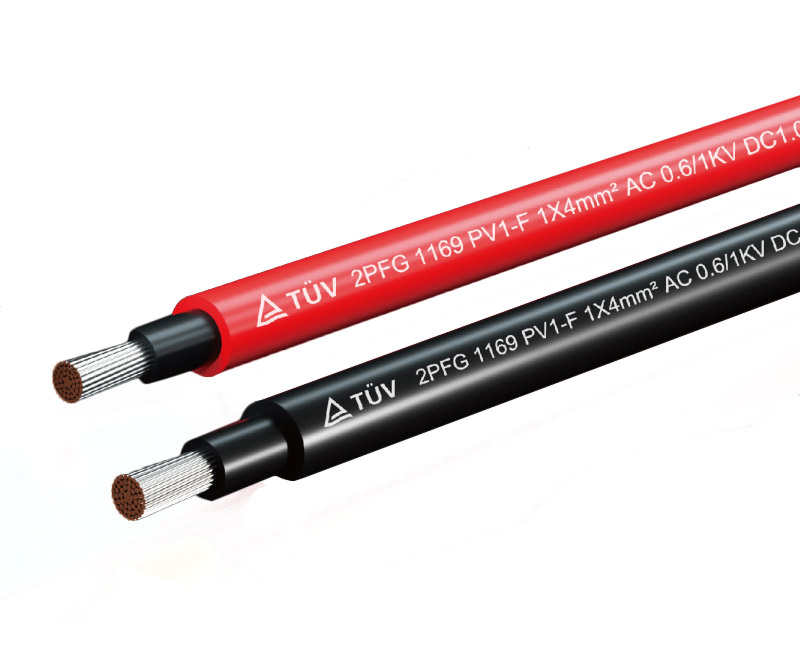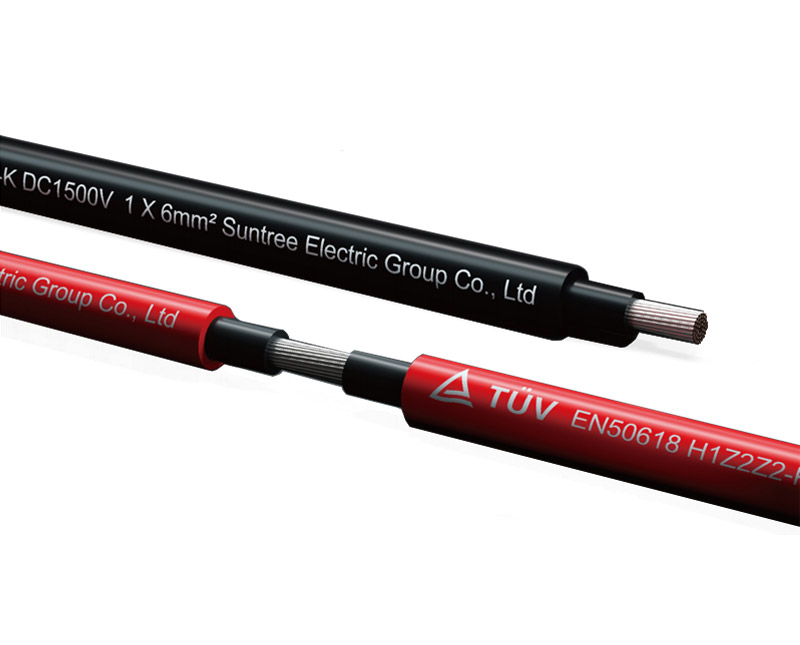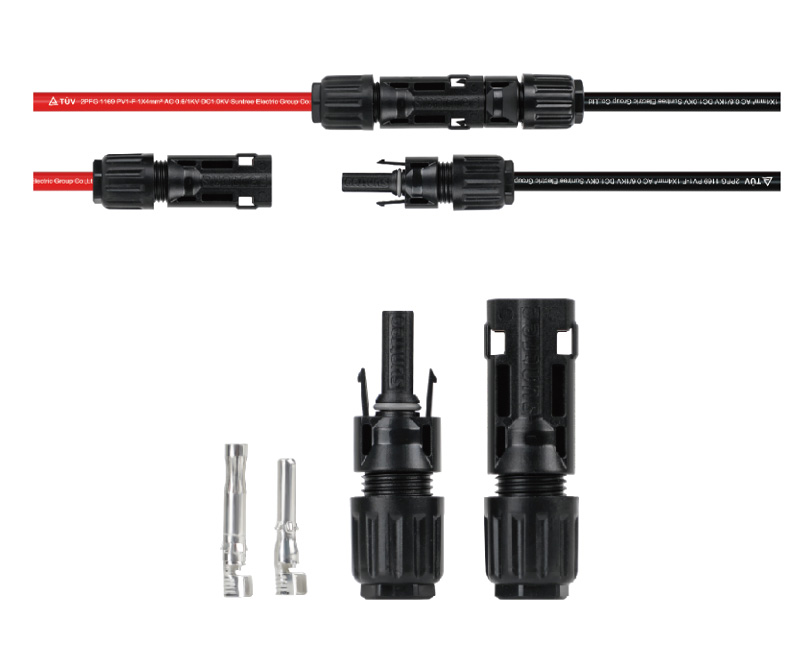Cable and Solar Cable: The Bond Connecting the Future of Energy
In today's wave of energy transformation, power transmission is crucial. Cables are the key to power transmission, and solar cables are a new force in the field of new energy. This book will explore the relationship between the two and reveal the mystery for you.
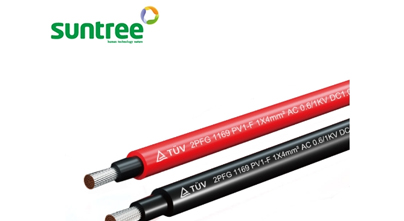
I. Introduction
In the era of rapid technological development nowadays, the fields of power transmission and energy utilization are constantly evolving. Cable, as a fundamental component for power transmission, is widely applied in various industries and daily life scenarios. With the increasing pursuit of renewable energy, Solar Cable, which is specifically designed for solar power generation systems, plays a crucial role in the new energy field. Although they seem to be independent of each other, they are actually closely connected and jointly build a modern energy transmission network, contributing to the sustainable development of mankind.
II. Basic Knowledge and Wide Applications of Cable
(I) Definition and Structure
A cable usually consists of one or more insulated conductors, wrapped with one or more layers of protective sheaths to ensure the safe and stable transmission of electricity. Its basic structure includes conductors, insulation layers, shielding layers (some cables have them), and jackets. The conductors generally adopt metal materials with good electrical conductivity, such as copper or aluminum. The insulation layers use insulating substances like rubber and plastics to prevent current leakage. The shielding layers are used to reduce external electromagnetic interference, and the jackets protect the internal structure of the cable from mechanical damage, chemical corrosion, and environmental factors.
(II) Traditional Application Areas
Construction Field
In the power supply system of buildings, cables run through various rooms and floors, providing electricity for lighting, electrical appliances, elevators, and so on. From the distribution box to each electrical terminal, different specifications of cables are reasonably configured according to the load size to ensure the efficiency and safety of power distribution. For example, in high-rise residential buildings, a large number of power cables are laid in the shafts, connecting the electricity meter boxes of each household with the indoor distribution boxes to meet the daily electricity needs of residents.
Industrial Production
All kinds of production equipment in factories, such as machine tools, motors, and automated production lines, rely on cables to transmit power and control signals. Industrial cables need to have higher voltage resistance, high-temperature resistance, and wear resistance to adapt to the harsh production environment. In steel mills, high-strength cables connect huge steelmaking furnaces and various lifting equipment, withstanding the tests of high temperature and high load to ensure the continuity and stability of the production process.
III. Characteristics of Solar Cable and Its Key Role in Solar Power Systems
(I) Unique Performance Requirements
Weather Resistance
Solar Cable is exposed to outdoor environments for a long time and has to withstand the tests of direct sunlight, ultraviolet radiation, temperature changes, humidity, wind and sand, and other natural factors. Therefore, its jacket material adopts special plastics with excellent weather resistance, such as cross-linked polyethylene (XLPE) or polyvinyl chloride (PVC). These materials can effectively resist the degradation effect of ultraviolet rays, prevent the aging and cracking of the cable sheath, and ensure the insulation performance and mechanical strength of the cable during long-term use.
Ultraviolet Resistance
Ultraviolet rays are one of the main factors causing the aging of cable sheath materials. Solar Cable enhances its resistance to ultraviolet rays by adding additives such as ultraviolet stabilizers and antioxidants. These additives can absorb the energy of ultraviolet rays and prevent them from destroying the molecular chains of the cable materials, thus extending the service life of the cable. Experiments show that the performance of specially formulated Solar Cable can still meet the requirements of solar power generation systems after being continuously exposed outdoors for many years.
High and Low Temperature Resistance
The working environment temperature range of solar power generation systems is relatively wide, changing from cold winters to hot summers, with temperature variations possibly exceeding dozens of degrees Celsius. Solar Cable needs to maintain good flexibility and electrical performance under such temperature conditions. Its insulation materials and jacket materials are specially treated so that they will not become brittle or hardened at low temperatures and will not soften or flow at high temperatures, ensuring the normal operation of the cable in extreme temperature environments. For example, in solar power stations in desert areas, the high temperature during the day can reach above 50 °C, and the low temperature at night may drop below 0 °C. Solar Cable can still stably transmit electricity to ensure the stable operation of the power station.
(II) Role in Solar Power Generation Systems
Module Connection
Solar Cable connects solar panel modules together to form a battery array. In this process, the quality and performance of the cable directly affect the power transmission efficiency and stability between the panels. High-quality Solar Cable can ensure that current is transmitted between the modules with low losses, reducing energy losses caused by poor contact or excessive resistance and improving the power generation efficiency of the entire solar power generation system. For example, in large ground-mounted photovoltaic power stations, thousands of solar panels are connected in series and parallel through Solar Cable to form a huge power generation matrix. Any cable connection failure in any part may affect the power generation output of the entire power station.
Connection with Inverter
The inverter is one of the core devices in the solar power generation system. It converts the direct current generated by the battery panels into alternating current for household use or grid connection. Solar Cable connects the battery array with the inverter and transmits direct current to the inverter for conversion. In this link, the current-carrying capacity of the cable must meet the requirements of the system to ensure the normal operation of the inverter and avoid safety problems or equipment damage caused by cable overload. Meanwhile, the shielding performance of the cable is also very important, which can reduce the electromagnetic interference generated during the transmission of direct current and ensure the stable operation and power quality of the inverter.
System Wiring and Power Transmission
In addition to module connection and connection with the inverter, Solar Cable is also responsible for the wiring and power transmission of the entire solar power generation system. The alternating current output from the inverter is transmitted through the cable to the distribution box and then distributed to various electrical equipment or connected to the grid. In this process, Solar Cable realizes the connection and integration with traditional cables in function and jointly builds a complete power transmission link. For example, in distributed rooftop solar power generation systems, Solar Cable is laid from the roof panels along the walls or wire ducts to the indoor distribution box, and then ordinary cables are used to transmit power to household electrical equipment, realizing the local consumption of solar power and the surplus power being fed into the grid.
IV. The Connection and Mutual Influence between Cable and Solar Cable
(I) Technological Inheritance and Innovation
Solar Cable has inherited, to some extent, the manufacturing technologies and processes of traditional Cable, such as the stranding of conductors, the extrusion of insulation layers, the braiding of shielding layers, and the covering of jackets. However, in order to meet the special needs of solar power generation systems, Solar Cable has carried out a large number of innovations in material selection, structural design, and performance optimization. For example, it adopts new high-temperature-resistant and weather-resistant insulation materials and jacket materials, and optimizes the cross-sectional shape and size of the cable to improve the current-carrying capacity and heat dissipation performance. These innovative technologies, in turn, provide new ideas and directions for the development of the traditional Cable industry and promote the progress of the entire cable technology.
(II) Commonality of Standards and Specifications
Although Solar Cable has its specific performance requirements and application scenarios, it follows many common principles and standards with traditional Cable in terms of basic electrical performance, safety standards, and quality specifications. For example, both need to meet certain electrical safety indicators such as voltage resistance, insulation resistance, and flame retardancy, and both must comply with relevant national and international cable manufacturing standards and installation specifications. This commonality enables cable manufacturing enterprises to expand their production business of Solar Cable under the existing production system and quality control framework, reduce production costs, and at the same time, it is conducive to ensuring the quality and reliability of Solar Cable and promoting its promotion and application in the market.
(III) Synergy between Market Demand and Industrial Development
With the continuous growth of the global demand for clean energy, the solar power generation market is showing a booming trend, which directly drives the market demand for Solar Cable. The development of the Solar Cable industry, in turn, promotes the structural adjustment and upgrading of the entire cable industry. On the one hand, traditional cable enterprises have increased their investment in the research and development and production of Solar Cable to meet the market demand for new energy cables. On the other hand, the development of Solar Cable has also attracted more capital and technology into the cable industry, promoting technological innovation and industrial integration in the industry. For example, some emerging cable enterprises focus on the research and development and production of Solar Cable. Relying on their technological advantages and market share in the new energy field, they have gradually emerged in the industry and become a new driving force for the development of the cable industry.

